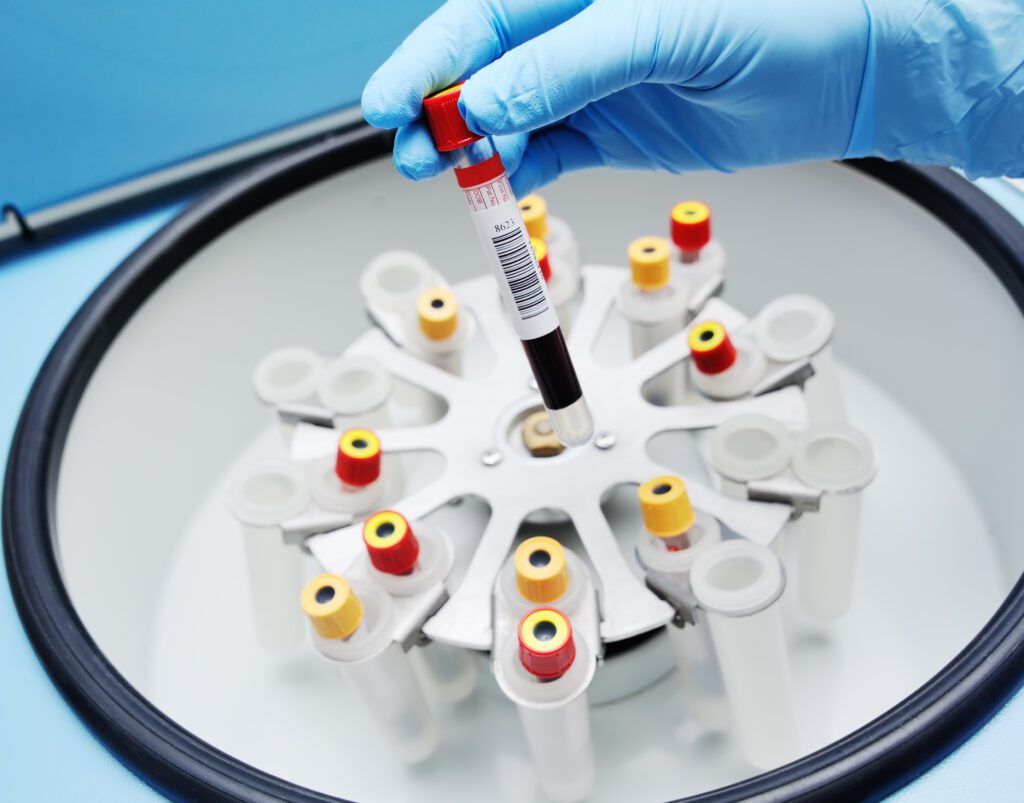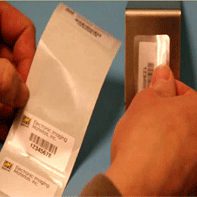Mitochondrial DNA. Blood-spatter evidence. Luminol testing for the presence of blood. OK—so that’s what the popular television shows serve up for forensic fare. It’s exciting and intriguing stuff.
All excitement aside, however, there are very practical concerns for real-life forensic work. There must be a clear and unassailable chain of evidence—precisely where barcode labeling excels.
DNA Evidence

The Federal Bureau of Investigation is a long-standing customer—they routinely order CryoLabel® rolls by the thousands for the FBI Laboratory. (If we told you what these labels were used for, then we would have to eliminate you.) We can say that our CryoLabel® would be highly useful for long-term storage of biological material—such as epithelial tissue swabbed from a perp’s mouth, saliva traces found on a discarded soda can or semen left on a victim’s clothing. Samples of these substances carrying DNA can be barcoded and then cryogenically frozen to avoid degradation as an investigation stretches over months or even years.
Preserving the DNA is so important that a tamper-proof system of tagging the stuff is of vital importance to major-case squads. Crime scene investigators and forensic crime laboratory technicians are obliged to engage in the time-consuming process of collecting, tracking and inventorying crime scene evidence. Inaccuracies and human errors are rife.
Integrity, protection against contamination and evidence stability are the chief objectives. Barcode labeling provides a secure chain-of-custody tracking—from the time of initial evidence collection through various forensic analytical processes to final disposition in a case file archive or long-term repository. A barcoding system can also reduce the time investigators spend logging and inventorying evidence by as much as 50 percent.
Evidence Collection
The process starts with evidence collection at the scene of the crime. Investigators must scoop up evidence for tagging and bagging. Electronic Imaging Materials, Inc. offers tamper-evident labels for tagging sample bags. The adhesive closure prevents the sample from being tampered with between collection at the scene and processing. The pressure-sensitive adhesive (PSA) offers other advantages over—let’s say—envelopes. By preventing the investigator from having to moisten an envelope flap, a PSA label eliminates the risk of contamination from saliva altogether.
While we’re on the topic, saliva is not the only form of DNA found in the mouth. Buccal swabs are cotton-tipped applicators used to collect cheek cells from inside a suspect’s mouth. EIM can easily engineer unique pre-coded barcode sets to reduce labeling time and ensure that buccal swabs collected and their protective swab containers always match. These barcode sets can include matching labels for all sorts of documentation—including logbooks, paperwork and file folders.
Barcoded evidence is then submitted to the forensics crime laboratory. When the lab scans the barcode label, extensive case and chain-of-custody data is quickly and securely transferred directly to the lab’s information database. A new barcode label is then printed for the lab’s evidence pouch. A submission receipt barcode can be printed to confirm transfer to the lab and preserve chain-of-custody integrity. Since the barcoding system is completely integrated through Open DataBase, the lab technicians do not need to keystroke case data or case numbers. This eliminates human error and saves time. To keep the bosses happy and keep the trial lawyers confident, barcoding can help supply data for management reporting, analytical reports, audit logging and security control.
Processing
The evidence is put through various forensic processes, such as slide examination under a microscope. We offer chemical-resistant labels that withstand the nasty solvents that are found in a crime lab. Our workhorse XyResist® Labels are ideal for use in a forensic laboratory. Between steps or when the forensic work is done, evidence can be identified with our CryoLabel® and then stored at cryogenic temperatures for optimal evidence stability.
Non-DNA Evidence

In addition to labels suitable for laboratory information management, we have labels for property room evidence management. The property room at a station contains bins, shelves and lockers—all of which must be properly barcoded. This represents an enormous challenge for law enforcement officials. A barcoding system provides an invaluable level of accuracy for cataloging and tracking evidence as it moves through the criminal justice system. A barcode can include a wealth of information for each custody transaction—including date, time, officer, badge number, locker/bin, chain-of-custody status and miscellaneous comments.
The Erie County Central Police Services in contacted EIM for barcode label suggestions. The labels needed to be tear-proof and adhere well to both brown bags and plastic bags. Furthermore, the labels would be exposed both to freezing and normal room temperatures. After studying their specifications, EIM suggested a nifty solution: the Freez-R-Mark™ Label. This plastic label is engineered with an aggressive “freezer” adhesive that features excellent initial tack and ultimate bond to flexible packaging and varnished —even when applied at freezer temperatures. It even adheres to many surfaces that have certain amounts of frost or moisture build-up. Solution provided—problem solved!
Need help finding the right label for your forensic lab? Reach out to The Label Experts!




